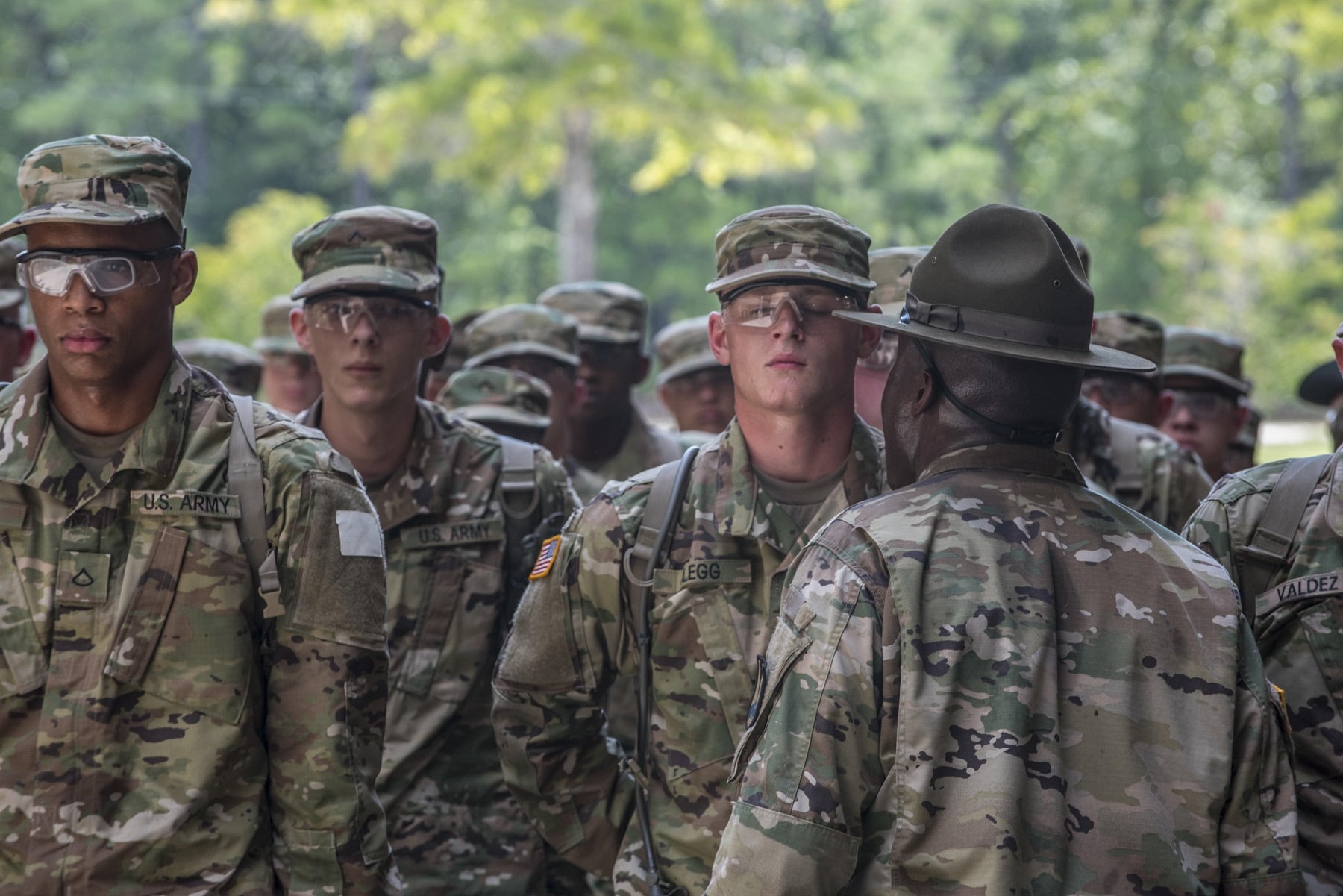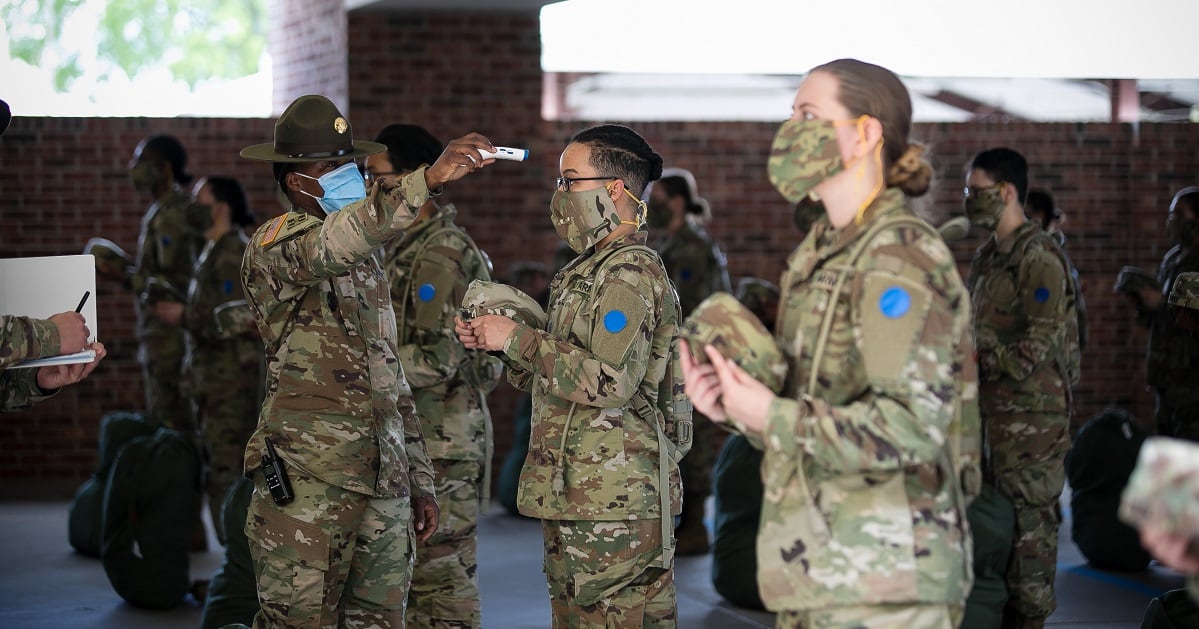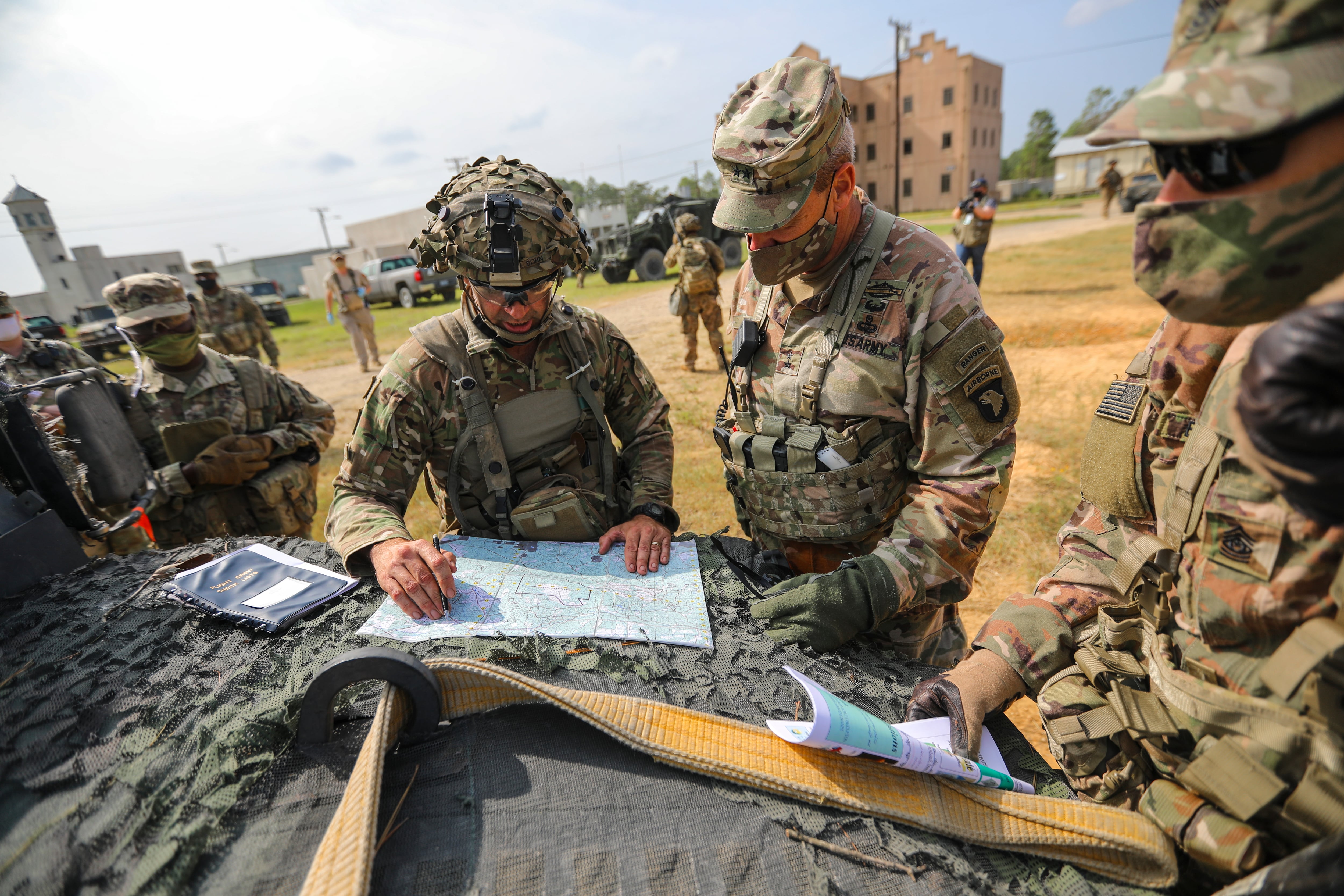Army training and medical leaders say the service’s public health measures are sufficient to stem surges in coronavirus cases among soldiers as the global pandemic trends into the fall and winter months, a period of the time known for increases in viral spread as people cluster together indoors for the holidays.
Combined with re-openings across the country and so-called lock-down fatigue, the United States has experienced a 40 percent increase in the number of hospitalized COVID-19 patients over the past month.
Increased testing, isolating positive cases and contact tracing, as well delegating the responsibility to increase health protection levels to installation commanders, are among the measures that Army leaders say will help them get through the fall and winter months.
At basic training locations, the service has adopted a new model that breaks trainees down into smaller groups for two weeks of controlled monitoring before they can proceed with training, said Army Center for Initial Military Training commander Maj. Gen. Lonnie Hibbard.
“As of today, there’s less than 3 percent of those trainees who have tested positive for COVID-19,” Hibbard told reporters by telephone Monday. “We do multiple screenings prior to them arriving at one of our four Army training centers. Then once those trainees arrive at those training centers, we do 100 percent COVID testing on all new recruits before they start."
The Army, which is the largest of the armed services, has reported the most COVID-19 cases within the Defense Department since the pandemic began. There were more than 20,500 cases as of Monday, according to Pentagon data.
Overseas, the situation has been similar, with COVID-19 cases rising in places like Stuttgart, Germany, home to U.S. Army Europe. A sharp increase in cases there triggered German officials to raise the health threat in the city to their highest level and to order new restrictions on social gatherings.
“We do continue to conduct individual through brigade-level collective training here in Europe,” said Brig. Gen. Christopher Norrie, who leads 7th Army Training Command on the continent.
RELATED

“What we’ve found ... is that those basic protection protocols work: physical distancing, forced hygiene, aggressive testing and isolation if there is an incident of COVID,” Norrie said Monday during the telephone call.
“As we work our way through increasing numbers in Europe, we are in a different place than we were back in March,” he added. “We have an exceptionally mature testing capability and capacity here. Our leaders in every echelon have a very mature understanding of the environment, and the potential range of threats.”
Norrie credited the training “bubbles” established by the Army with helping to stem potential cases. Those precautions involve testing and isolating troops for a period of time prior to sending them off for a training exercise.
“As we look around Germany and Europe here, there are increasing numbers,” Norrie said. “We continue to fight for opportunities to train and the protocols and the lessons that we’ve learned over the last several months allow us to do so safely.”
But with cases surging stateside, the Army’s internal precautions are not always enough. Often, the service’s health protection levels must be decided based on the surrounding communities they’re posted in.
“Our installations are not immune to [cases that occur in] the cities and the towns that we’re located in,” Army Surgeon General Gen. Scott Dingle said during an Oct. 14 telephone call. “Of course, our soldiers and family members are also living in those communities. And so the tendency is that we will mirror what’s happening in the civilian sector.”

Army Public Health Center director John Resta added during that Oct. 14 call that military infectious disease rates tend to be delayed, but still trend upwards alongside local case numbers.
“The way I described it is, we float on our surrounding communities, we’re just a little further upstream,” Resta said. “So high tide doesn’t reach us just as quick. Most of the time, our rates will lag local communities."
Resta noted that there is a COVID-19 resurgence in the upper Midwest and northern Plains area of the United States that is starting to move down into the southeast, an area heavily dotted with military installations.
The Army instituted a 14-day pause to bringing new recruits into basic training in April, following an initial spike in cases. The service then began screening recruits for symptoms and testing them, as well as deciding whether to ship recruits based on the levels of infection in each state and local area.
“That’s one of the reasons that we have been aware of this since the get-go," said Resta, adding that if conditions warrant, installations can increase their health protection conditions and restrict access to posts.
“And those senior commanders at every installation have the flexibility to implement what is needed to best protect the health of the force, and again, they’re working with the local communities,” added Dingle, the Army surgeon general.
Kyle Rempfer was an editor and reporter who has covered combat operations, criminal cases, foreign military assistance and training accidents. Before entering journalism, Kyle served in U.S. Air Force Special Tactics and deployed in 2014 to Paktika Province, Afghanistan, and Baghdad, Iraq.




